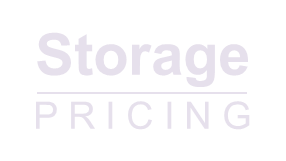Excerpt
Cohesity, the pioneer of converged secondary storage, today announced the public launch of the Cohesity Data Platform, the first product designed to consolidate all secondary storage use cases on a unified environment that helps organizations control growing data demands. The Cohesity Data Platform combines a web-scale storage architecture with standards-based hardware components that enable companies to transition from today’s expensive silos for different data use cases to a simple, pay-as-you grow solution for data management. By consolidating a wide range of functions onto a single platform, Cohesity can reduce storage costs by more than half and make enterprise data management incredibly simple.
…
The Elements of a Unified Secondary Storage Platform
The Cohesity Data Platform simplifies secondary storage by combining software and hardware components to provide a web-scale storage foundation that can efficiently handle a wide range of workloads. These components include:
- Cohesity’s patented operating environment, OASIS (Open Architecture for Scalable, Intelligent Storage), which combines a scale-out storage architecture with built-in enterprise storage services and quality of service management to consolidate multiple use cases, such as data protection, DevOps, file services, and analytics, on a single platform.
- Two new hardware platforms in the C2000 Series, with each 2U block containing four clustered nodes. Cohesity clusters can mix hardware generations and types in a future-proof model to grow with an organization from four to four hundred nodes.
- The C2300 offers 48 TB raw HDD capacity and 3.2 TB raw PCI-e SSD capacity
- The C2500 offers 96 TB raw HDD capacity and 6.4 TB raw PCI-e SSD capacity
The core foundation of the solution is Cohesity OASIS, designed to handle the differing resiliency and performance requirements of multiple data use cases. OASIS combines web-scale storage with built-in enterprise data management features traditionally addressed by separate point solutions:
- Copy Data Management: Global, policy-based deduplication and patented snapshot/ cloning technology enables companies to maximize storage usage and reclaim space from redundant copies of data. Cohesity was recently recognized in Gartner’s 2015 Hype Cycle for Storage Technologies as a player in this emerging space.
- Data Protection: OASIS offers seamless data protection for applications through integrated backup and recovery features, including unlimited snapshotting and thin cloning, with built-in global indexing for full searchability.
- DevOps: With general-purpose storage capabilities from OASIS, including native support for NFS and SMB protocols, enterprises can quickly deploy DevOps clones from backup data, efficiently repurposing passive data in legacy environments for faster development workflows.
- In-Place Analytics: Cohesity offers built-in and programmable data analytics to help enterprises make better, more informed data management and business decisions. Cohesity’s native analytics capabilities provide real-time metrics and forecasting, while its programmable Analytics Workbench empowers businesses to run custom queries against their datasets. All analytics are run in-place on the Cohesity cluster to maximize time-to-insight and eliminate the need for separate data analytics infrastructure. Support for integrated third-party analytics applications will be available in 2016.
The Cohesity Data Platform was designed to work in conjunction with pre-existing enterprise data storage solutions, allowing companies to start with a configuration that fits their environment without the high up-front costs associated with “rip-and-replace” solutions.
The Cohesity Data Platform is available now at a starting price of $110,000 (USD).



